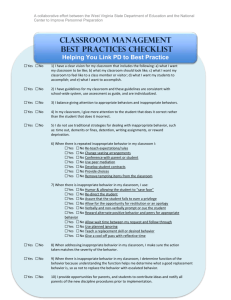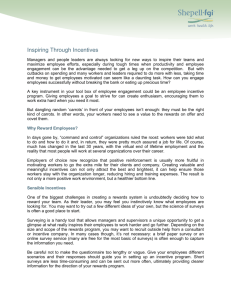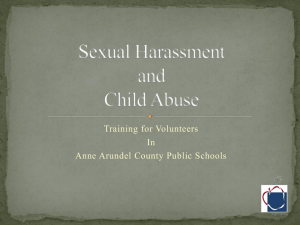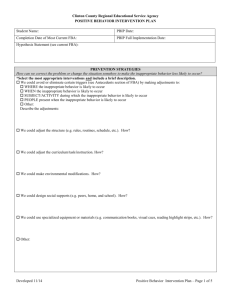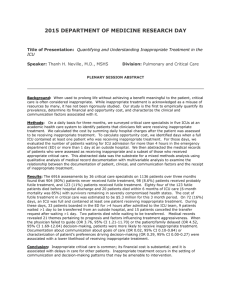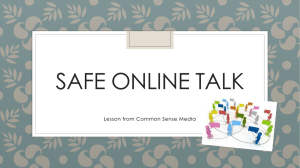chapter7
advertisement
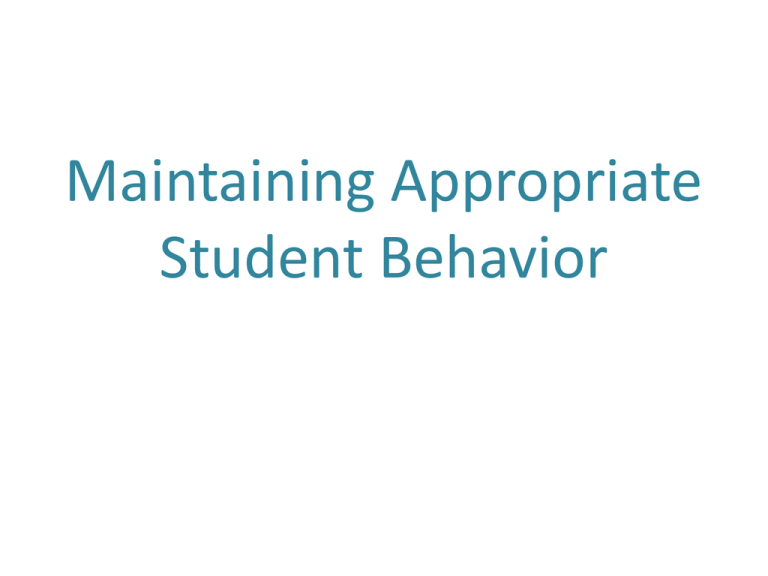
Maintaining Appropriate Student Behavior How to monitor student behavior- Mr. Aaron Tinnin Monitoring Student Behavior Two important categories of behavior 1. Student involvement in learning activities. (attention during presentations & discussions, progress on seatwork) 2. Student compliance with classroom rules and procedures. ***Key- MUST have a clear set of expectations (CEP) Monitoring Student Behavior Effective monitoring techniques -be able to see the faces of all students -scan the room frequently -monitor the class by walking around and checking individual student’s progress -don’t “talk to the chalkboard” -begin seatwork as a whole group activity -monitor students’ grades and have them keep records How to be consistent- Mr. Matt Joyner Consistency • What is consistency? - Maintaining the same expectations for behaviors that are appropriate or inappropriate in particular activities. - Applicable to all students in every situation, no exceptions should be made - Inconsistency can lead to students testing the boundaries and behaving inappropriately Consistency • Ex. If the penalty for tardiness is a detention, then the rule must be enforced all the time. • However, there are exceptions…. • Some students have particular individualized programs that need to be followed • Utilize good judgment when it comes to extending deadlines • Talking during group work and seatwork -maintain and discuss rules and guidelines for student talk Consistency Undesirable inconsistency usually arises from 1. Procedures or rules are not reasonable, workable, or appropriate 2. Teacher fails to monitor behavior 3. Teacher is not consistent with enforcing penalties Ways to address inconstancy re-teach procedure, modify and reintroduce it, or abandon it if it doesn’t work. How to manage inappropriate behavior- Mr. Tyler McBride Prompt Management of Inappropriate Behavior • Prompt management helps prevent escalation • Areas of concern include: lack of involvement, work avoidance, obvious violations of classroom rules and procedures • “withitness” – detect off task behavior and stop it before it happens • Do not ignore off task behavior, address it directly and calmly Prompt Management of Inappropriate Behavior 1. 2. 3. 4. Four Ways To Manage Inappropriate Behavior Proximity- make eye contact, move closer to the student, use a signal (such as finger to the lips) Simply remind the student/class of the appropriate procedure When a student is off task, redirect his/her attention to the task Ask or tell the student to stop the inappropriate behavior. Then, monitor until it stops. Prompt Management of Inappropriate Behavior -If you are unable to address the student about his/her behavior at the time, discuss it privately with him/her later -Send student to the hall or to a time-out desk if they are being disruptive How to build a positive climate- Mr. Jeff Ayers Building A Positive Climate • Keep a positive perspective and avoiding dwelling on student misbehavior or inadequacies • Students need specific corrective feedback to know what to improve (avoid negative comments!) • Students should look forward to class, expect to learn and receive assistance , and feel supported in their efforts. • If you believe your students are capable they are more likely to work harder • Praise student accomplishment How to build a positive climate • • • • Discuss instructional goals Insist students complete work satisfactory Refuse to accept excuses for poor work Communicate acceptance of imperfect initial performance when students struggle to achieve new learning • Convey confidence in students’ abilities • Avoid comparative evaluations • Display an encouraging “Can Do” attitude that generates student self-confidence Rewards and Incentives- Ms. Candice Duncan Improving Class Climate Through Incentive or Rewards • Incentives or rewards can help build a positive climate • The incentives add interest or excitement to the class routine while directing attention toward appropriate behavior and away from inappropriate behavior. • When rewarded and not punished, students are more likely to respond positively to the teacher. • Before using incentives, check your school’s policy. Improving Class Climate Through Incentive or Rewards • • • • Rewards should target behaviors you want to encourage Have simple procedures for incentives Make sure all students are able to achieve the incentive Types of incentives: Symbols: grades, gold star Recognition: giving attention to the student, displaying work Activities: free time, work with a friend, class party or trip Materials: awarding objects of value to students • CAUTION: receiving a reward reduces intrinsic motivation to complete a task if extrinsic reward is no longer available • Verbal praise and positive feedback help enhance student’s intrinsic motivation A big thank you to Mrs. Rachael Pavey who created this wonderful PowerPoint. She more than contributed her part! Group Activity At your table, develop a skit that is either a good representation or a bad representation of the topic on your group’s index card. You have 5 minutes to create a skit that should be about 1 minute long. You will present these to the class for a formative assessment!

